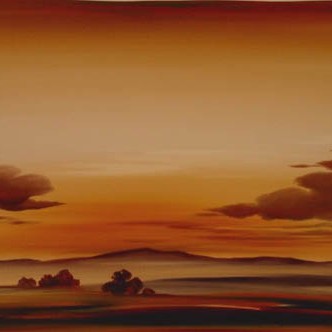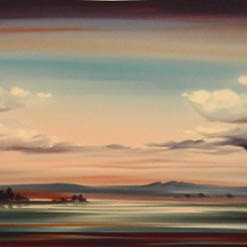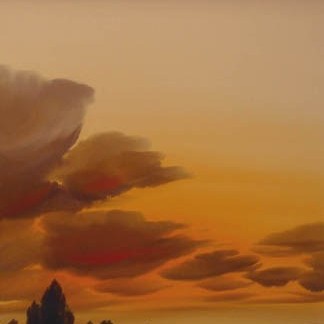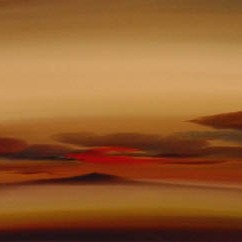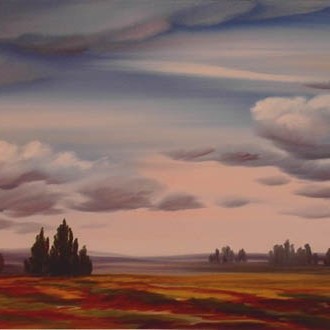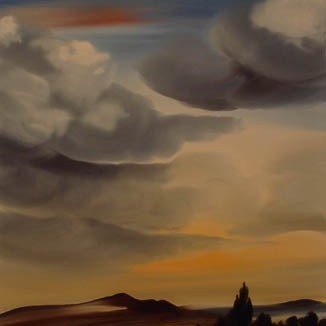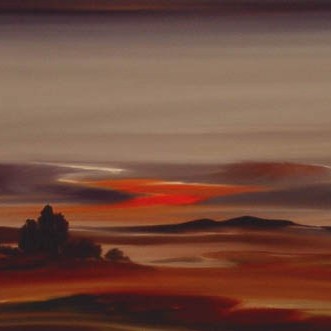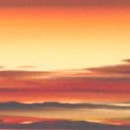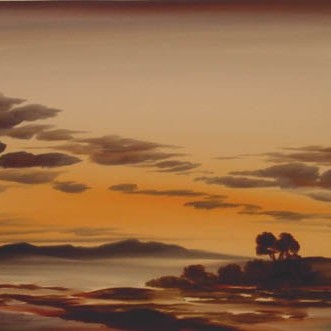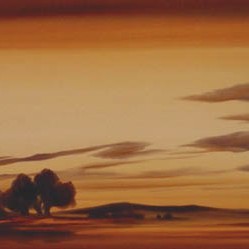When the Estonian landscape painting is searching with its controlled colours still for the \"typically Estonian\", then Arrak\'s sharp and direct colour relations search for something \"generally human\". The artist does not express anything \"personal\" anymore, he is not tied to himself. Here can be found everything and everybody. And eternally and forever.
Arno Arrak\'s (1963) being an artist seems very logical and even irrefutable.
As the son of Jüri Arrak, it was his father, who gave him the first directions,
how to see the world through colour, how to live in the name of art and inside
art. Another determining experience were the trips to South-Siberia in the
beginning of the 1980s. There I experienced for the first time the purity of
nature and its freeing strength, says Arrak himself. That experience he still
reflects in his works. In the conditions of mental repression the artist left in
the end of the 1980s for Sweden, a couple of years later for Canada and since
1997 he lives in the USA, being so one of the few foreign Estonian artists
of \"the new generation\".
While living in Toronto, Canada, Arrak worked
together with a leading print master Alan Flint. As the result of the
co-operation was born a new technique that Arrak himself calls \"water-colour
monotype\" and which has drawn the attention of printing masters and art
collectors. First of all Arrak paints on silk with water-colours and pure
pigments, transferring later the figure onto papar which is used for intaglio
printing techniques. So only one copy can be made of each silk painting. The new
technique of Arrak makes us re-vise our current understanding of water-colour
that we until now have connected with depicting the discussion between water and
colours. Arrak\'s works are considably more powerful and self-confident. If the
water-colour tries to hide itself without saying anything definite and doing it
at a concrete moment, then the works of Arno Arrak convey very clearly that the
\"liberating force of the nature\" is such a strong experience that it also calls
for a strong solution.
In his works Arno Arrak explores through his dream landscapes the possibility
of the existence of ideal forms. Still, his works are not only remarkable as
form-cultural innovations, but they are something much more:\"ideal form\" means
for him inexplicable energy that guides a human being \"away from this reality\".
Most probably the personal experience, having been received for the first time
in South-Siberia, forces Arrak once and again to strive for something
through unearthly colour and landscape combinations that can not be achieved by
sensible logics and that is depressed by everyday routine and is tried to be
forgotten by it. Arrak is searching for the roots, but these roots can not be
\"fastened\", chained to a certain identity, vice versa - Arrak searches for
situations, where man becomes free and detaches from the reality. When the
Estonian landscape painting is searching with its controlled colours still for
the \"typically Estonian\", then Arrak\'s sharp and direct colour relations search
for something \"generally human\". The artist does not express anything \"personal\"
anymore, he is not tied to himself. Here can be found everything and everybody.
And eternally and forever.
.png)
